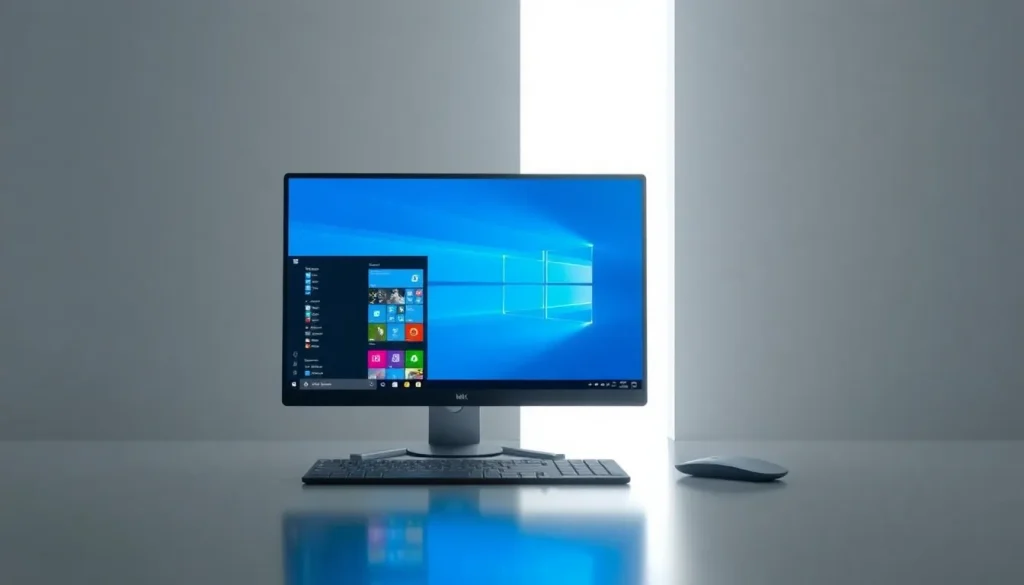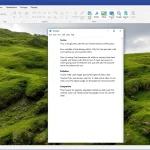Consider trading in your Windows 10 PC for value from Microsoft

As the clock ticks towards October 14, 2025, Windows 10 users are faced with important decisions regarding their aging operating system. With Microsoft's official support ending on this date, many are left wondering about their options. Fortunately, there are alternatives and potential benefits that may help you transition smoothly and responsibly without adding to the growing problem of electronic waste.
In recent developments, Microsoft appears to be considering the environmental impact of outdated tech by introducing a trade-in program for Windows 10 devices. This initiative not only encourages users to upgrade but also seeks to promote sustainability by minimizing electronic waste. Understanding these options can guide you in making informed choices about your current device.
What happens to Windows 10 after October 14, 2025?
After the end of support date, Windows 10 will no longer receive regular updates from Microsoft, which includes security patches. This poses a significant risk as unpatched vulnerabilities can be exploited by malware, resulting in data breaches and system instability. However, there are some pathways to continue using the system safely:
- Extended Security Updates (ESU): Users can opt for a paid service that provides an additional year of security support.
- Third-party Security Solutions: Consider investing in third-party antivirus and security software to help mitigate risks.
- Upgrade Options: Evaluate your hardware and determine if upgrading to Windows 11 is a feasible option.
Despite these alternatives, using an unsupported operating system is not advisable for those concerned about security and privacy.
Can you still use Windows 10 after support ends?
Technically, you can still use Windows 10 after October 14, 2025, but it comes with considerable risks. The absence of updates means that your system will be vulnerable to new threats. As users weigh their options, considering the implications of running outdated software is crucial.
Many businesses and users may find that their systems continue to function well, but this could lead to a dangerous complacency. It's vital to stay informed about potential risks, including:
- Increased susceptibility to malware and viruses.
- Compatibility issues with new software and hardware.
- Potential loss of data integrity and security breaches.
In essence, while it may be possible to continue using Windows 10, the long-term outlook is unwise.
How to wipe Windows 10 before selling?
If you decide to move on from your Windows 10 device, ensuring your data is securely wiped is essential. Here’s a simple guide to follow:
- Backup Important Data: Before erasing everything, ensure you have backups of any important files.
- Reset Your PC: Navigate to Settings > Update & Security > Recovery, and select "Reset this PC".
- Choose to Remove Everything: Opt for the option to remove all files and applications.
- Secure Erase: Consider using third-party software to securely wipe your drive, ensuring no data recovery is possible.
Once you’ve completed these steps, your device will be clean and ready for its new owner.
Can I trade in my Windows 10 laptop?
In light of the upcoming changes, Microsoft is reportedly rolling out a trade-in program for Windows 10 devices. This initiative aims to facilitate the transition to Windows 11 while also addressing environmental concerns. Users may find the following options available:
- Trade-In Value: Depending on the condition and specifications of your device, Microsoft may offer a cash value or credit towards a new purchase.
- Recycle for Good: If your device isn't eligible for trade-in, you can still opt to recycle it responsibly.
- Availability: This program is accessible to both individual consumers and businesses, depending on the region.
As part of the trade-in process, Microsoft aims to encourage users to invest in more eco-friendly technology solutions.
Is it bad to still have Windows 10?
Carrying on with Windows 10 post-support isn't inherently bad, but it does raise several red flags. Users should be aware of the implications:
- Security Risks: Without updates, your system is exposed to vulnerabilities, leading to potential data theft or loss.
- Performance Issues: Older hardware may struggle with newer applications and updates, leading to slow performance.
- Compatibility Concerns: New software may not support outdated operating systems, leaving you at a disadvantage.
In conclusion, while it's possible to continue using Windows 10, the drawbacks are significant. Upgrading or responsibly recycling your device is generally the better path forward.
The environmental impact of outdated technology
As we increasingly shift towards digital solutions, the issue of e-waste becomes more pressing. Disposing of old devices irresponsibly contributes to environmental degradation. Here are ways to mitigate your impact:
- Recycling Programs: Participate in certified e-waste recycling programs that ensure safe disposal.
- Donation: Consider donating functional devices to schools or charities.
- Upcycling: Explore creative ways to repurpose old hardware for new uses.
By making informed choices regarding your devices, you can contribute to a more sustainable future.
For a deeper look into Microsoft's recycling initiatives and the trade-in process, check out the following video:
In summary, while Windows 10 will continue to function beyond its support deadline, the associated risks and responsibilities necessitate careful consideration. Embracing upgrade options and sustainable practices can not only secure your digital environment but also contribute to the health of our planet.




Leave a Reply